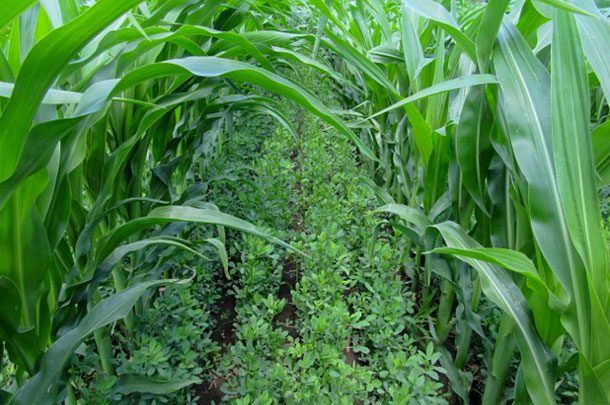By: Craig Sheaffer
Can alfalfa germinate in a block of ice?
Scientists in the early 1900’s reported that alfalfa seed did germinate when surrounded with ice. We recently confirmed that with seed from modern alfalfa varieties that varied in fall dormancy when they germinated near the freezing point of water (31.3 F to 32.2 F). This temperature is much lower than the optimum minimum germination temperature of 60 F. The ability to germinate at very low temperatures may be derived from alfalfa’s origin in the Fertile Crescent where early establishment when moisture is available may have a competitive advantage.
At very low temperatures (<40F), germination of alfalfa seed is much slower when compared to 40 to 50 F. We found that at 32 F, it took 15 days to reach 50% germination. At 50 F, 50% of seeds germinated in just 3 days. Individual seedlings will emerge slowly at low temperatures, meaning a long, staggered period of emergence, while at higher temperatures seedlings will emerge more uniformly. In crusted soils, staggered germination may be problematic as the collective push of many seeds can better crack and break crusted soils.
Can germinated seedlings freeze?
Alfalfa seedlings have good tolerance to air temperatures as low as 24F when germinated and hardened during early spring temperature and daylength. However, 20F temperatures dramatically reduced seedling survival. Alfalfa at the hypocotyl arch, cotyledon, and unifoliolate stages had similar responses to freezing temperatures. The response to freezing was similar for three alfalfa varieties with fall dormancy ratings of 3, 4, and 5 with high levels of disease resistance (Figure 1).
What is the likelihood of air temperature of 24F or below in your area?
Temperatures as cold as 24F are unlikely after May 1 in Southern Minnesota. The Minnesota DNR provides probabilities of various spring freezing temperatures throughout the state. For example, if alfalfa was seeded April 30 and emerged in 7 days, there is about a 40 to 50% chance of a 32 F freezing temperature event. A 32F temperature will not damage alfalfa seedings in the hypocotyl arch to unifoliolate leaf stages. There is far less than a 10% chance of 24 F temperatures occurring that would cause seedling mortality. Visit the DNR site for the probability of temperatures in the low 20’s at your location.
Recommendations
- Seed as early as possible while avoiding the likelihood of air temperatures of 24F and below. Early seeding allows seedlings to take advantage of spring moisture conditions, compete better with weeds, and provides a longer growing season with the possibility of three cuts in the seeding year.
- Watch seeding depth. Maximum depth for seeding on most soils is ¼ inch. At low soil temperatures, alfalfa emerges slowly and crusted soils can reduce emergence.
- Use seed treated with Apron XL (mefenoxam). With extended periods of germination under cool conditions, alfalfa seeds and seedlings are vulnerable for infection by Pythium and other pathogens. Pythium and other seedling diseases can cause “seed rot” or “damping off,” which can greatly affect stand establishment.





Post a comment
Report Abusive Comment